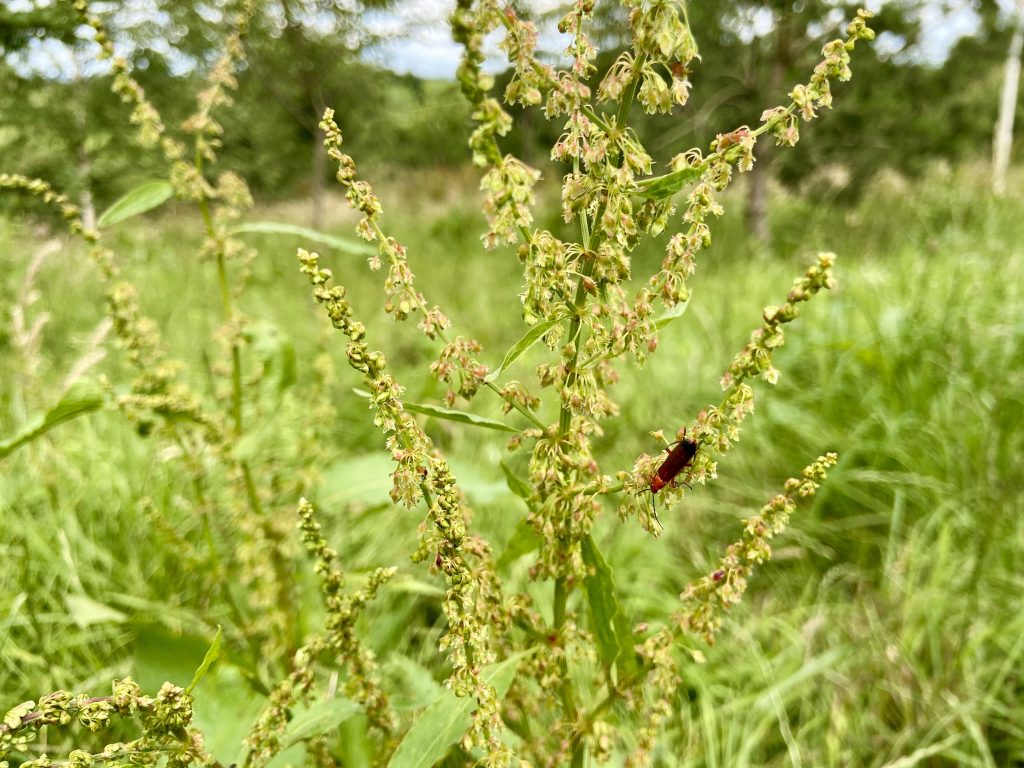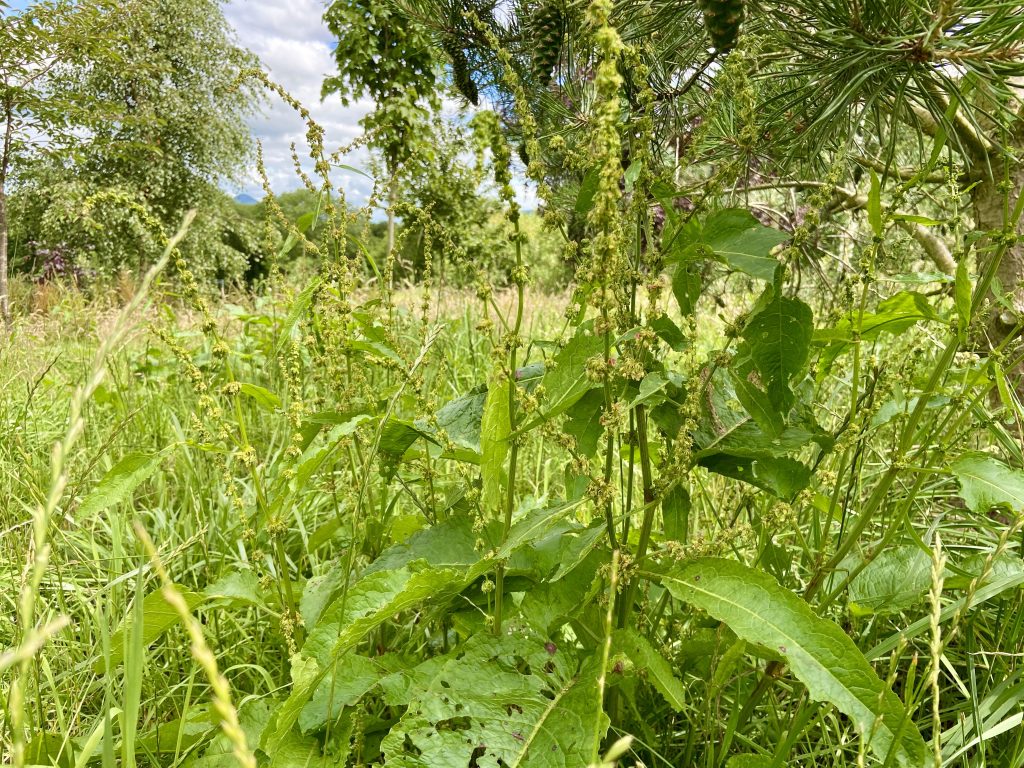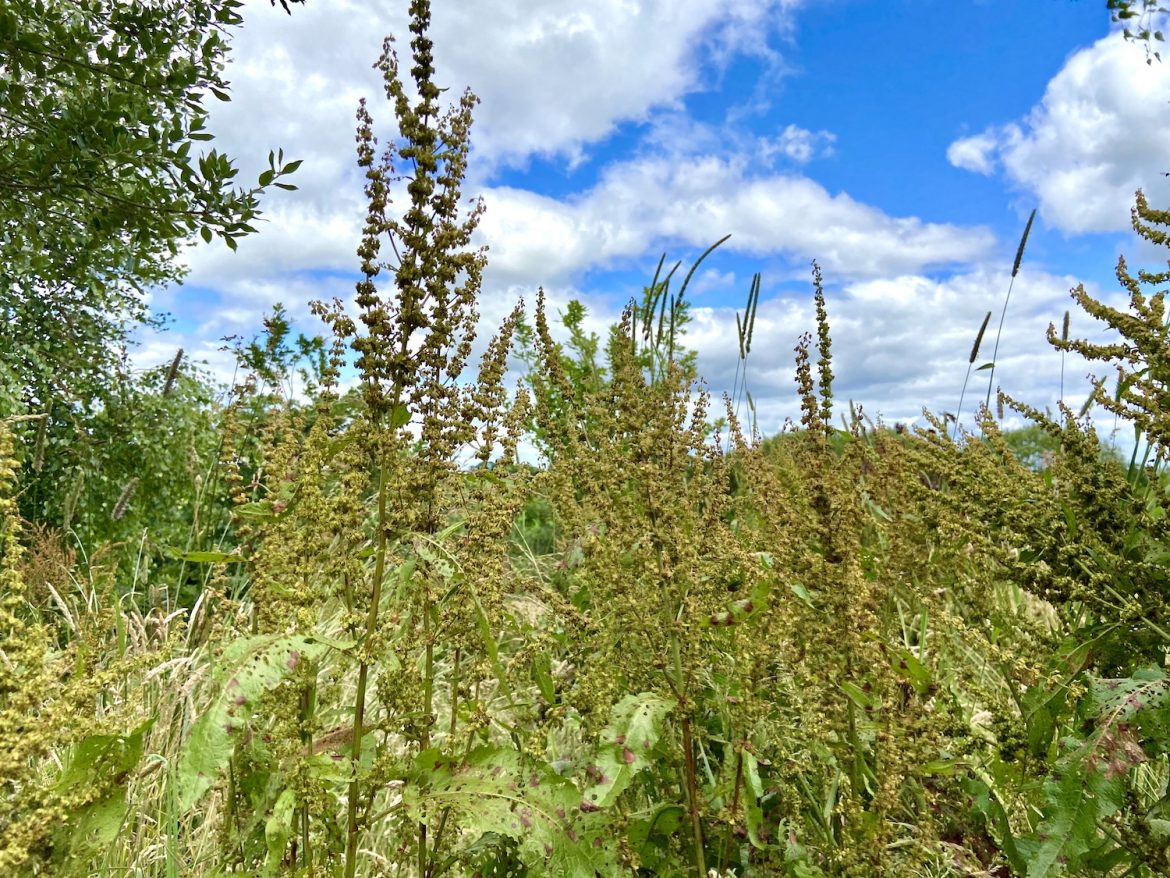Dock leaves are present in almost every field, garden and lawn, and it is extremely likely that you have them growing or in a dormant state in your garden. In fact, dock seeds were found in soil samples from over a third of UK gardens. Home Farm certainly isn’t short of a few.
This post has been motivated by a chat we had with Darlac on Twitter recently, where they shared some interesting facts about dock leaves, which prompted me to look into them. I hit the books to find out more and have put together my findings below.
There are a number of common weedy docks, and from a gardening perspective they’re all equally plentiful, annoying and unsightly.
They are abundant in cultivated ground, wild fields, farm yards, river banks and lawns. What makes them so prolific is their deep, tough taproot and ability to produce ridiculously high quantities of seed. Under favourable conditions, a single dock plant can produce an astonishing 30,000 seeds.
I’ve checked several gardening books and The Book of Weeds cites that dock seeds can survive in the soil for up to a century. Other sources state that seeds can lie dormant in soil between 25-50 years. Whichever source is correct there’s no denying that docks have a survival and preservation mechanism that’s built to last.

Uses
Just about everybody in the UK knows that you rub dock leaves on the area of skin where you’ve been stung by nettles. I’ve done it and it does help a little bit.
Some people eat young dock leaves that are harvested in early spring. From what I’ve read, it’s light lemony flavour is an acquired taste. They can also be added to nettle soup. Maybe I’ll try them next year.
Used correctly, docks can have a laxative effect that stimulates gut motion, making it a good natural remedy for constipation, reflux and stomach acid issues.
You can also use curled dock leaves to make a vodka based tincture that some believe helps with skin problems and constipation.
Dock leaves in history
The practice of using dock leaves to alleviate stinging nettle burn goes back centuries where it is mentioned in Chaucer′s Troilus and Criseyde.
Historical records show that dock leaves helped cure Julius Caesar’s soldiers of scurvy.
In 1653, Culpeper suggested boiling dock roots in vinegar for “bathing itches, scabs and breaking out of the skin.”
There are also numerous references to dock leaves in traditional Chinese medicine, Ayurveda and Classical Greek texts.
These numerous historical references suggest that docks have grown in abundant quantities for millennia.
How to get rid of dock leaves
Seedlings can simply be killed off by hoeing or delicate hand picking, but as soon as taproots have been allowed to develop they become a nightmare to get rid of. Established plants can only be killed by digging out the top 15-20cm of the taproot because the plant will not be able to resprout from a deeper point.
With long-term control and removal in mind, it’s critical to stop seed production. You can do this by cutting down the flowering stems to stop them from spreading.

